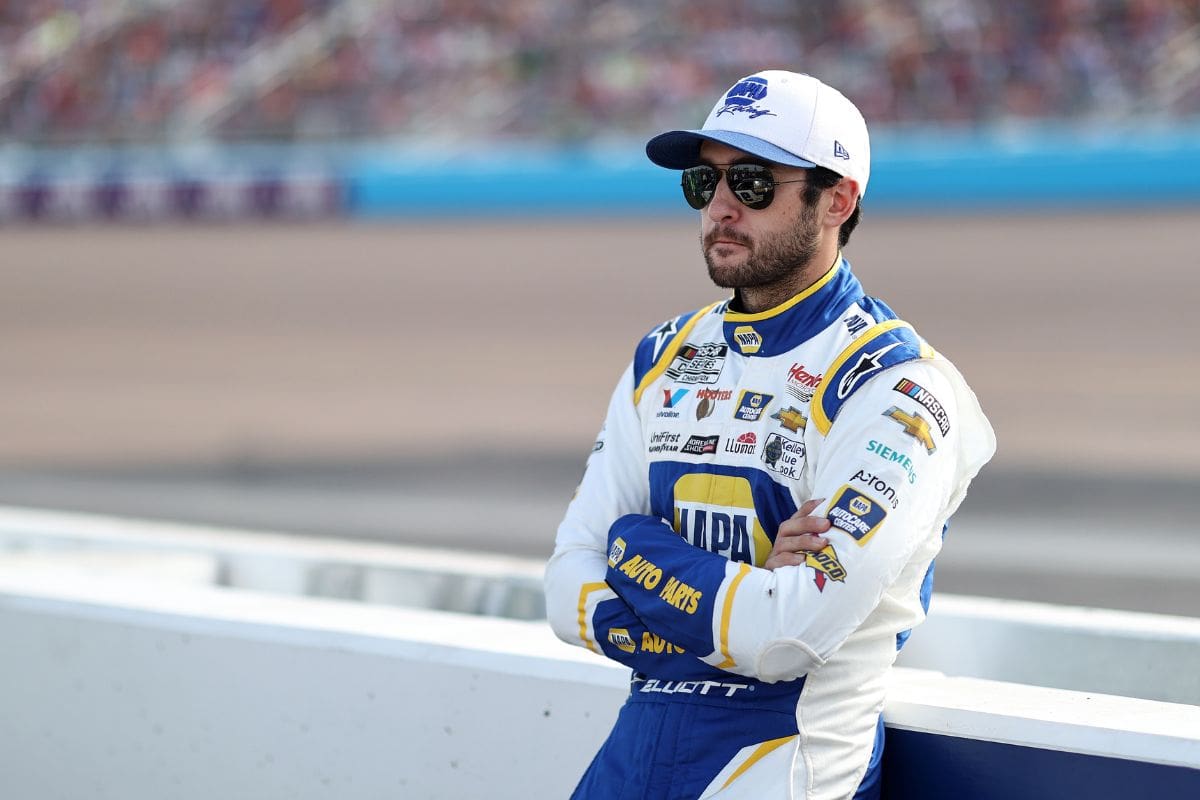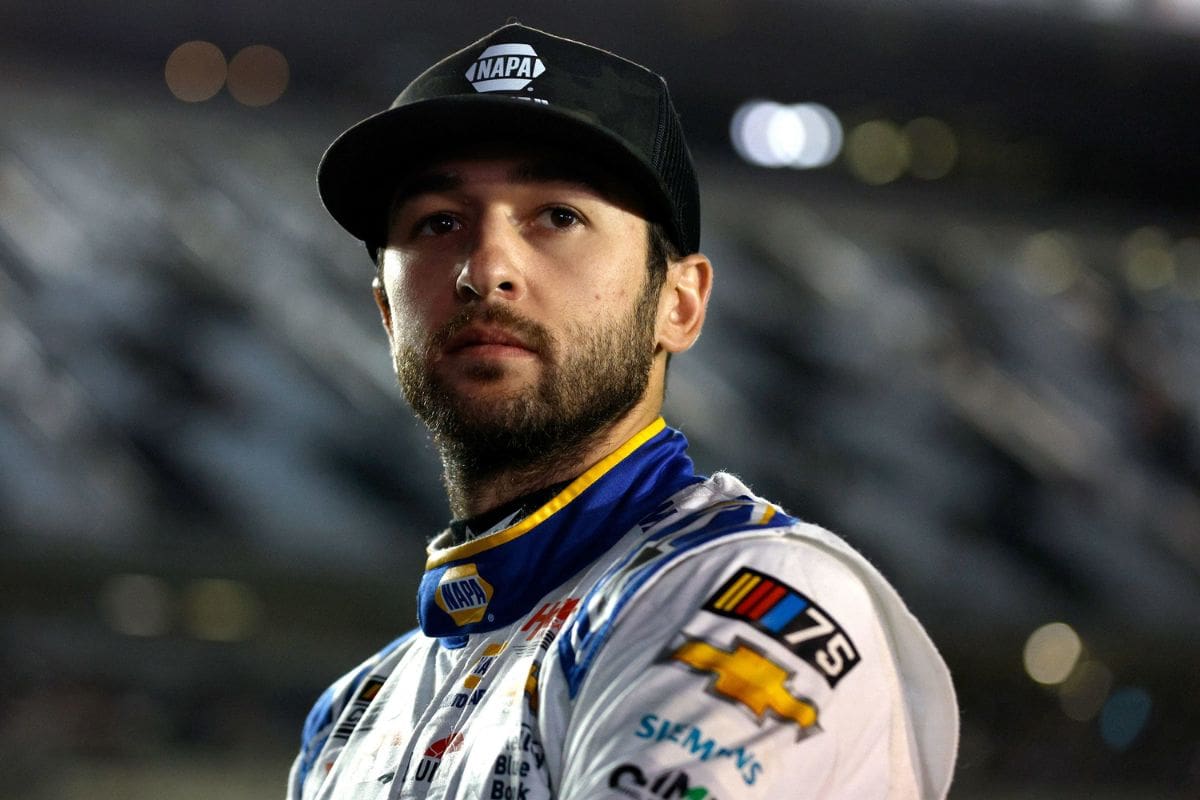Chase Elliott’s Comeback Plan: Chase Elliott‘s approach to overcoming his recent struggles at Watkins Glen centers on the anticipated performance of Goodyear’s new tire compounds. Following a lackluster 32nd-place finish in 2023, Elliott’s rests on the tires’ unique wear-off rate, which could greatly improve tire management and create more overtaking opportunities. This tactical shift not only aims to address his previous challenges, such as subpar qualifying and limited passing conditions, but also raises questions about the broader implications for competitive dynamics in the upcoming race.
Key Highlights
- New Goodyear tire compounds feature a 3-second wear-off rate, enhancing tire management challenges and providing opportunities for better performance.
- Improved passing opportunities at Watkins Glen may help Elliott overcome his past qualifying struggles and gain positions during the race.
- Tire management is crucial for Elliott to balance speed and conservation, especially after his disappointing finish in 2023.
- Track modifications, particularly in the bus stop area, could favor Elliott’s driving style and strategic approach to overtakes.
- The competitive field may level out due to tire changes, allowing Elliott to capitalize on others’ mistakes and improve his standings.
Upcoming Watkins Glen Race and Tire Changes
As NASCAR gears up for the crucial Watkins Glen race in the 2024 Cup Series playoffs, the introduction of a new tire compound promises to markedly alter the dynamics of the competition. This marks the initial time Watkins Glen International will host a playoff race, and the implications of the new tire technology are substantial.
With a 3-second wear-off rate, drivers will face heightened challenges in tire management, necessitating tactical decisions throughout the race. The new tire compound is expected to facilitate improved passing opportunities, thereby reducing the traditional reliance on qualifying positions.
This shift could potentially level the playing field, allowing drivers who may have struggled in qualifying to contend more effectively during the race. As a result, teams will need to adapt their race strategies, balancing speed with tire conservation to optimize performance over the course of the event.
Chase Elliott, a sad contender, has expressed the impact of the new tires. His acknowledgment of the tire changes highlights a critical aspect of the race; the ability to manage tire wear can be as influential as raw speed.
The race at Watkins Glen will demand not only driving skill but also tactical foresight, as drivers navigate the complexities introduced by the new compound.
Chase Elliott’s 2023 Performance and Optimism
Chase Elliott’s performance at Watkins Glen in 2023 serves as a clear contrast to his historical dominance at the track. His previous honors included two wins and multiple top-five finishes, underscoring his reputation as a formidable competitor. However, this year, Elliott faced notable challenges, culminating in a disappointing 32nd-place finish—his worst at Watkins Glen.
Several factors contributed to this unexpected outcome:
- Qualifying Position: Starting from 15th, Elliott struggled to gain momentum, only reaching 7th before the first pit stop.
- Tactical Pit Decisions: The decision to stretch the fuel run proved detrimental, as he ran out of gas, leading to a lost lap and compromised track position.
- Difficult Passing Conditions: The nature of the track made overtaking a formidable task, further hampering his ability to recover.
Despite this setback, Elliott’s remain palpable. He expressed confidence in the new Goodyear tires, suggesting they could level the competitive landscape. In his pre-race comments, he noted that tire performance could mitigate the disadvantages of a poor qualifying position, enhancing his ability to contend for victory without starting at the forefront.
“I mean it was like you know if you didn’t qualify well you were just totally setting yourself up to fail and I think that has really been the case all the way up until all the way through last year. You know truthfully, and I think the only thing that could potentially change that would just be whether or not the tire falls off. You know if a tire actually has some fall of to it, then you know potentially you could. You can not have to qualify on the front row to have a shot to win.”- ELLIOTT
As Elliott prepares for future races, his historical skill at Watkins Glen, combined with his belief in tire advancements, could catalyze a resurgence. With renewed focus and tactical adjustments, fans and analysts alike will be watching closely to see if Elliott can reclaim his status as a dominant force on this iconic circuit.
Goodyear’s Tire Testing and Predictions
Recent tire testing conducted by Goodyear has generated considerable anticipation among teams and drivers, as the new tire compounds promise to influence race dynamics considerably. Goodyear’s director of racing, Greg Stucker, indicated that teams could expect a fall-off of approximately three ticks per lap over the course of a run. This notable wear rate is pivotal; it suggests that tire management will become a critical component of race planning, particularly on road courses like Watkins Glen, where overtaking opportunities are traditionally limited.
“Based on our test and a subsequent WFT (wheelforce test) with the manufacturers, we should see around three seconds of fall-off per lap over a run. That, of course, can mean more passing throughout the race. It’s always tricky on road courses as drivers take advantage of a limited number of ‘passing zones’, so the increased fall-off should lead to more comers and goers as some drivers manage their tires and gain on the field as the runs go on.”-(GREG STUCKER)
The testing, which included two practice sessions instead of the usual single session, provided valuable insights into tire performance. Data from these sessions revealed that most cars experienced at least a two-tick fall-off during a 10-lap run, heightening the potential for varied race conditions. As drivers grapple with tire degradation, the resulting challenges could lead to a dynamic race environment where some competitors excel as others struggle.
However, this heightened uncertainty is compounded by recent track changes implemented by NASCAR, which drivers have expressed concerns about. The interplay between tire wear and track modifications will surely shape the race’s narrative, adding layers of complexity to both driver strategy and team decisions.
NASCAR Drivers’ Reactions to Track Changes
NASCAR drivers have begun to weigh in on the recent track changes at Watkins Glen, highlighting both the challenges and opportunities these modifications present.
Remarkably, the inclusion of rumble strips in turn one aims to improve safety and precision, prompting varying reactions among competitors. Joey Logano noted the considerable impact of these adjustments, stating, “Watkins Glen isn’t the typical Watkins Glen that we’ve seen in the past.” He emphasized that the new curbing will alter how drivers navigate the bus stop and carousel, suggesting a shift in racing dynamics.
“Watkins Glen isn’t the typical Watkins Glen that we’ve seen in the past. They’ve changed the curbing to the bus stop itself to where you won’t be launching them into the corner as much, and then they also added rumble strips on the exit of the carousel to keep us from dropping way out there, so the track will race differently.”-(LOGANO)
Drivers are particularly focused on three key aspects of the changes:
- Precision Required: With the new rumble strips in place, drivers must exhibit greater precision to maintain speed, particularly in turn one.
- Altered Racing Lines: The modifications to the bus stop entry curb will necessitate a reevaluation of racing lines, potentially leading to more tactical overtakes and defensive driving.
- Consistency of Performance: For drivers like Ryan Blaney, who finished in the top three in Atlanta, the changes are seen as manageable. He remarked that while the adjustments will require adaptation, they are not excessive and could yield a more competitive environment.
“The changes to the track are not crazy. The bus stop entry curb is gone, so that’s gonna be different. Some of the rumbles they’ve got on the exit of the carousel in turn one will change a little bit, which I think is positive for the racing. You won’t be able to just blow turn one and bail out to the apron and still have speed, so it will take a little more precision.” – Blaney
Martin Truex Jr.’s Perspective and Race Outlook
As the discussion surrounding the adjustments at Watkins Glen continues, Martin Truex Jr. offers a unique perspective on how these changes could impact his performance. Currently sitting in the elimination zone of the playoffs, Truex’s outlook is characterized by urgency, as he finds himself 19 points below the cutoff line. This race is pivotal for him, making a strong showing at Watkins Glen not just a goal, but a requirement.
Truex expressed optimism regarding the recent track modifications, particularly highlighting the bus stop area. His comments reveal a keen awareness of how the adjustments can improve driver experience and performance. “I think the bus stops pretty straightforward. It’ll be a lot nicer through there last year,” he noted, emphasizing the challenges posed by the curbs in the previous season. This insight emphasizes his adaptability and readiness to utilize the new layout to gain competitive advantage.
“I think the bus stops pretty straightforward. It’ll be a lot nicer through there last year. It just beat the living crap out of you hitting those curbs. It was really bad, so um, you couldn’t even see where you’re going, but anyways that that should be more straightforward. And then I think it’s just a matter of you know how much of that runoff area do you use off of turn one and off the carousel.”-(TRUEX JR.)
The interplay between track changes and tire performance will be critical. With Goodyear’s new tires set to make their debut, Truex’s experience and tactical approach will be tested. He acknowledged the importance of utilizing the runoff areas effectively, suggesting an analytical mindset that is vital for capitalizing on the new conditions.
Truex’s perspective highlights both the challenges and opportunities ahead. As he prepares for what could be a defining race, his ability to navigate the adjustments will determine whether he can claw his way back into playoff contention. The race will indeed reveal if his outlook translates into results.
News in Brief: Chase Elliott’s Comeback Plan
Goodyear’s new tire compounds at Watkins Glen holds considerable potential to reshape competitive dynamics in NASCAR. Improved tire management and increased passing opportunities may address the challenges faced by Chase Elliott during the 2023 season, particularly following a lackluster finish. As NASCAR drivers express varied reactions to the impending changes, the collective anticipation surrounding tire performance highlights the critical role of equipment innovation in influencing race outcomes and driver strategies in the forthcoming events.
ALSO READ: Chase Elliott Faces Road Course Revival Challenge: Can He Conquer Watkins Glen?



